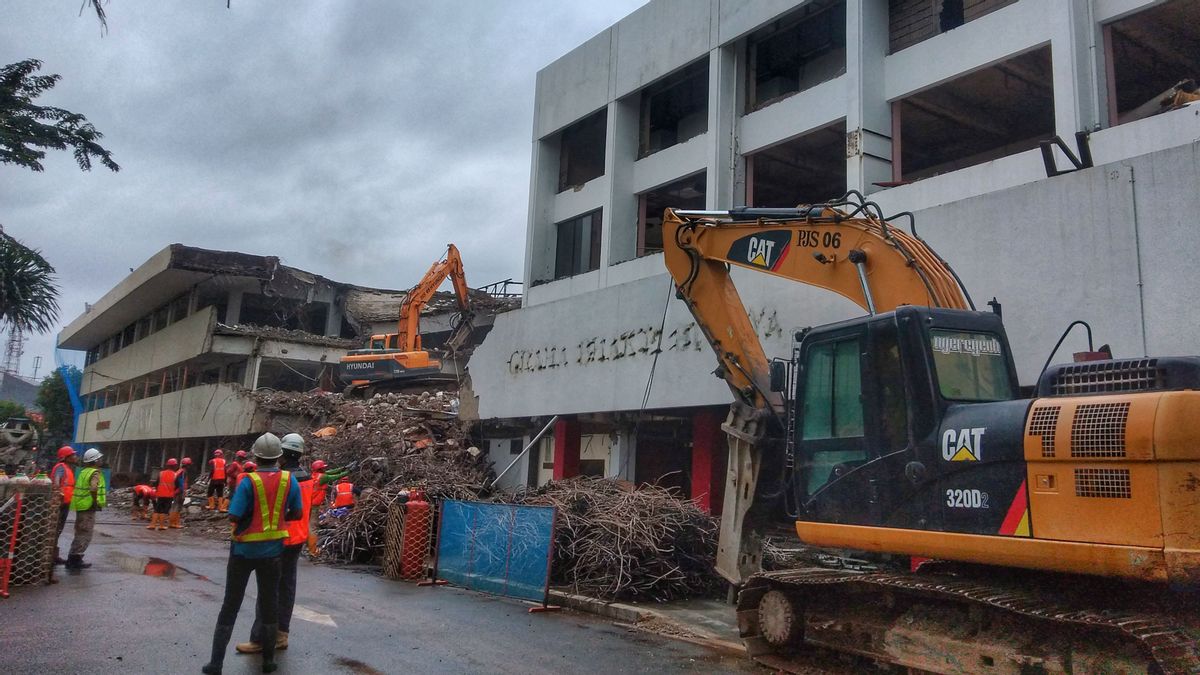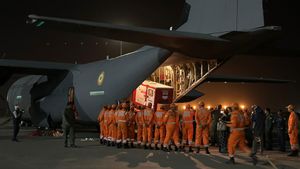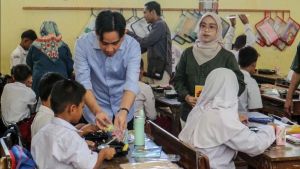JAKARTA - PT Jakarta Propertindo (Jakpro) is resuming the revitalization of Taman Ismail Marzuki (TIM), after being temporarily suspended or postponed due to problems by a number of artists.
President Director of PT Jakpro Dwi Wahyu Daryoto as the DKI Jakarta BUMD who is working on revitalization claims that his party has no disagreements with the artists. That way, activities can be resumed.
"The revitalization has been continued since before Eid. Now there are no protests (from artists)," said Dwi when met at the DPRD DKI Building, Central Jakarta, Monday, July 13.
The TIM revitalization progress has entered into phase 2 construction, namely the revitalization of the Graha Bakti Budaya (GBB) building. The GBB building will be rebuilt with a modern design.
Meanwhile, the construction of phase 1 which started earlier is still ongoing. The construction includes repairing the parking building, Amir Hamzah Mosque, library building, HB Literary Documentation Center. Jassin, public hallways, art galleries, dining areas, retail stalls and art guesthouses.
Recently, Dwi said that Jakpro had sat down with the artists to accommodate the input desired by the art activists. However, Dwi admitted that he could not fulfill all the inputs.
"Artists provide input on all kinds of matters. We have accommodated them, for example providing a place to practice (the arts). But, not all of us do accommodation, we can't design (the building)," said Dwi.
Dwi also denied the commercialization of the TIM revitalization. According to him, the commercialization that is worried about artists is optimization. He said, Jakpro only minimized the development capital expenditures that were charged from the APBD.
"Optimization is different from commercialization. We are minimizing the costs borne by the provincial government. We have to rack our brains so that routine maintenance costs do not become large and come from the APBD. Do not go back to the concept of commercialization," he explained.
For information, at first this rejection was loudly voiced by several art activists in a discussion entitled "Where do PKJ-TIM Wanna Take?" which was held at the HB Jassin Documentation Center, TIM, on Wednesday, November 20, 2019. In the discussion, a number of artists rejected commercialization in the revitalization of the TIM.
A number of artists who are members of the Taman Ismail Marzuki Artists Forum (FSPTIM) are concerned about the increase in building rental prices and the culture of commercialization that will eventually grow in the area.
FSPTIM spokesperson Noorca Massardi considers that there are still profit projections to be extracted from JakPro. Because, in the Regulation of the Governor of DKI Number 63 of 2019, Anies has assigned Jakpro to manage the infrastructure and facilities in the TIM after being revitalized.
It is certain, according to him, that Jakpro requires a large amount of money to replace the regional capital participation (PMD) that has been spent from the revitalization development to the maintenance costs of facilities in TIM to be returned to the regional treasury.
It is feared that Jakpro will take advantage by increasing the rental price of the Graha Bhakti Budaya (GBB) performance building after it is revitalized and the cost of lodging the art guesthouse to be built.
"The promise is just talk. All words cannot be justified. In fact, Governor Regulation 63 clearly states that Jakpro has managed a commercial area for 28 years. It is impossible for Jakpro not to make a profit," said Noorca.
The discussion on the discrepancy in understanding the revitalization of the dead team in the DKI DPRD, so the DPR RI must summon the Governor of DKI Jakarta Anies Baswedan to hear the case.
In a meeting on February 27 at the DPR RI Building, Anies promised that Jakpro would not commercialize the TIM area. This is because the management of art content that is held in the TIM area is held by the Jakarta Arts Council (DKJ) curatorial agency.
"Jakpro manages its infrastructure because it does not have the competence and track record in the arts. For artistic activities, the content is in the DKJ and the Culture Service," said Anies.
The English, Chinese, Japanese, Arabic, and French versions are automatically generated by the AI. So there may still be inaccuracies in translating, please always see Indonesian as our main language. (system supported by DigitalSiber.id)













